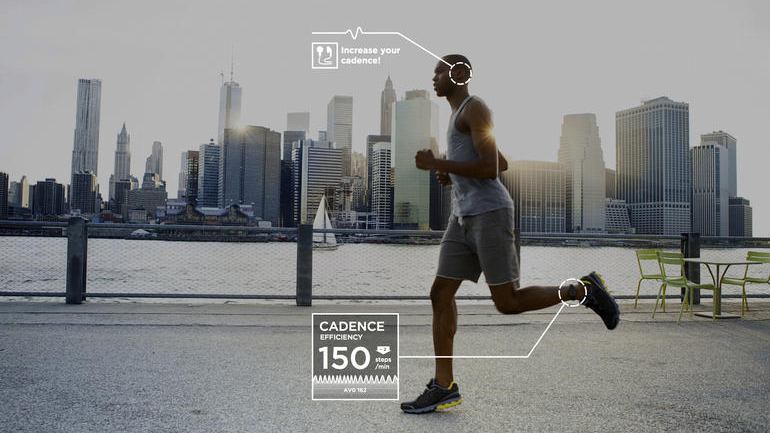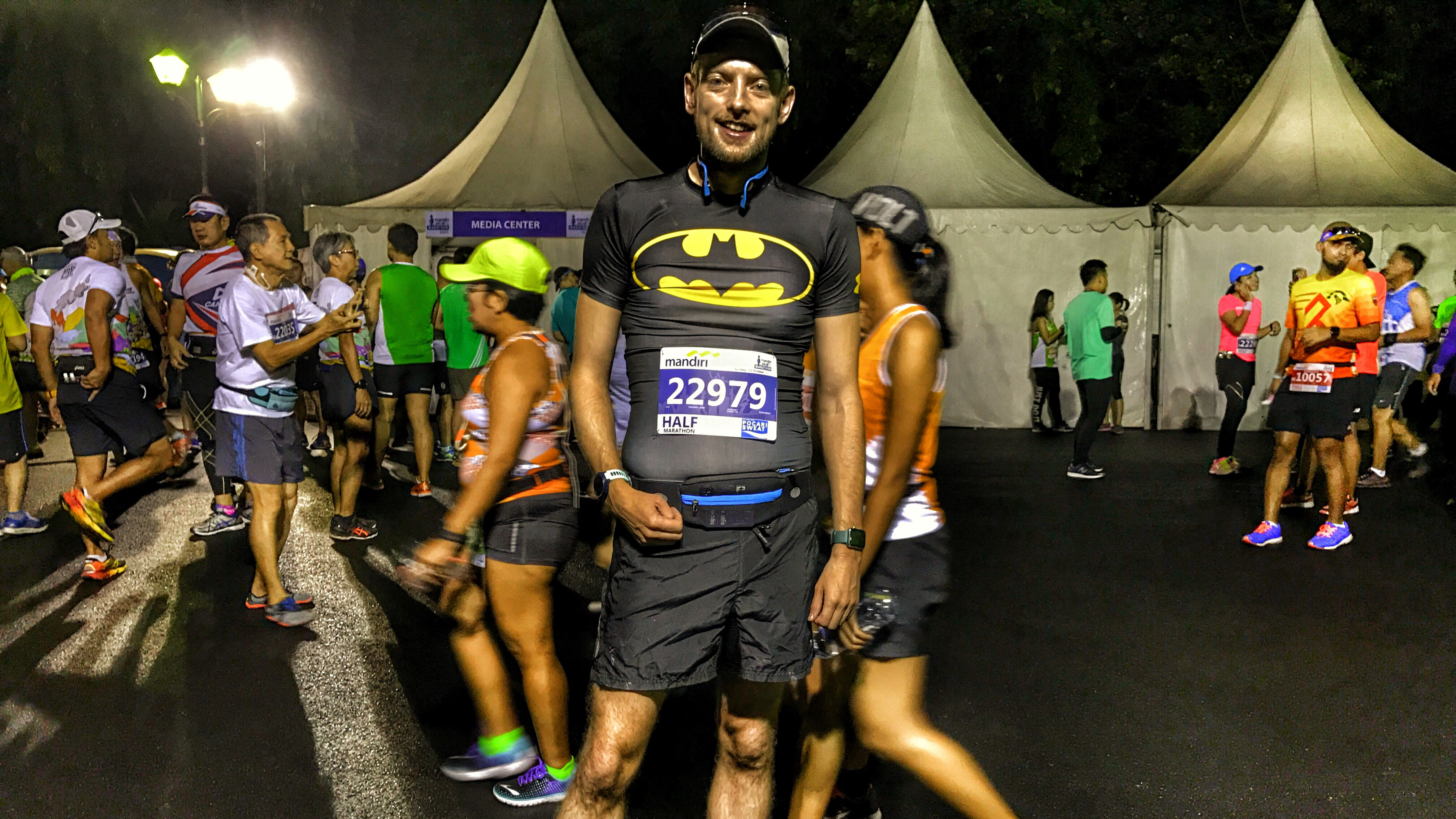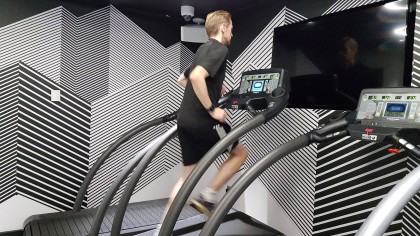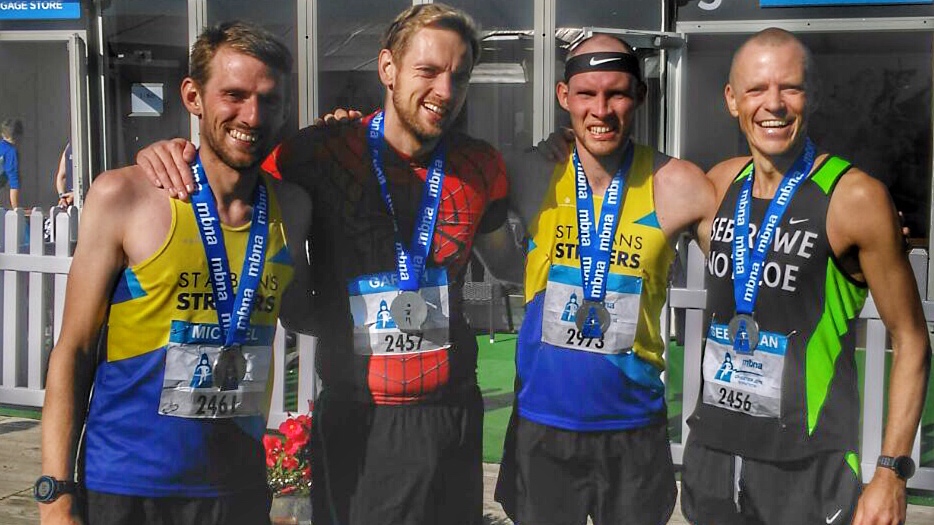Don't worry, the long journey to the London Marathon is nearly over
Day 1: Our Running Man of Tech's diary to help you get to the start line

I decided to start writing this countdown diary this morning, lying in bed and reading the ‘You’re in!’ magazine that runners receive when they find out they’ve got a place in the London Marathon.
It’s not because I want to document my story - well, as a narcissistic writer I do, of course - but because I get asked so many questions about running tech around this time of year that it would make sense to write it all down in a series.
So check back every day on the Running Man of Tech channel, where I’ll be doing a daily diary of running tech explainers, looking at trainers, speaking to coaches and more - hopefully giving a different angle on the forthcoming race.
I suppose I should start with the reason I’m doing London in the first place, other than it being one of the best races on the planet, such is the level of support and the achievement on offer.
For me, it’s the culmination of last year’s stupidity. At the end of 2015 I pledged to complete the ‘Smashrun Challenge’, where I’d complete all the achievements available on running analytics platform Smashrun by the end of 2016.
- Want to watch the race? See our London Marathon live stream guide

That was a tough 12 months. 115 challenges to achieve, which included such insanity as running 10km every other day, running 300 miles in one month, completing my first ultra marathon, running in every corner of the globe, heading up a mountain and taking on challenges in 10 different countries.
Still, it was brilliant. I took on one of the world’s roughest races as I ran up the 14000ft Pike’s Peak in Colorado, attempted a half marathon in downtown Tokyo straight off a 12 hour flight and ran the Jakarta half marathon accidentally still a little bit drunk (in what will forever be one of the worst times of my life).
Get daily insight, inspiration and deals in your inbox
Sign up for breaking news, reviews, opinion, top tech deals, and more.
I also took on my first two marathons - the first one a total nightmare in 3:23 (with a lot of walking), the second in 3:09, a triumph of technology and me learning how to tame the marathon distance a tiny, tiny bit. However, neither of them saw me break the 2:55 barrier (which is the speed a nine-year-old child ran the New York Marathon) and thus I missed out on one of the challenges in 2016.
I completed 114 of the 115 badges on offer with Smashrun, but that 2:55 time still hung in front of me, flipping me off like a childish spirit whenever I laced up my trainers.
So I signed up for a charity place with Cardiomyopathy UK (the charity for the disease my partner is afflicted with) and vowed to do everything in my power to get me that last achievement and put the Smashrun challenge to bed.
I gave up alcohol. And sugar. And socialising. I finally started going to bed on time to get up earlier to hit the gym, in a bid to make my legs strong enough to hold me through the final 6 miles. If you’ve never done it, the final part of the 26.2 mile distance is the pitiful time in every marathoner’s life when they’re chewed up and spat out by the distance.

I began eating sweet potatoes like I was trying to save the entire agricultural industry. I learned to cook quinoa, munched cous cous and read books about correct carb-to-protein ratios.
I also began following the Omegawave training plan, spending the first part of every day attaching electrodes and heart rate monitors to my body and following adaptive training programs. If I was going to do this, I was going to do with tech on my side.
I felt better than ever, which was annoying. I didn’t want to be one of those people that really loved healthy eating in place of plates of burgers and biscuits, preferring to believe that all the energy they had was made up.
But it turns out eating less sugar, especially the processed stuff, really does make you feel better, and I even started to sort of be able to see an abdominal muscle if I twisted in the right way by a window first thing in the morning. Form an orderly queue, ladies.
Turns out, it was all for nothing. I managed to, empirically, get slower. My 5k times rose by half a minute and running the same half marathons I did in 2016 saw me log results three minutes slower for each. Balls.

This was around six weeks ago, and it was a low point. I’d given my all and yet I was getting worse. So many theories burbled around my mind: was I doing too much in the gym while trying to keep up a full running training program? Was I burned out after 2016’s stupidity?
Wait… were biscuits the answer to running fuel?
I’m still not sure of the answer. But I switched back onto the same training plan I was using last year (sorry, Omegawave, but I just wasn’t feeling your schedule) and began to feel much better. I dialled back the gym and ate more food - although resisted the urge to just fill myself with chocolate.
I’d come this far, I wanted to find out how well a change of diet really could work.
So, here I am. 10 days out from one of the world’s best marathons, and I’m excited. The tapering has finally begun (that beautiful, sweet and magical time in any runner’s life where you’re not allowed to push harder) and I’ve come to terms with the fact my 2:55 goal is over.
But I’m feeling good about that. The whole point of doing this is to, on some level at least, enjoy it, and I don’t fancy spending three hours berating myself for failing to hit a time that’s just not within me.
If I can get 3:05 and attain Good For Age status, I’ll be allowed to come back and have another go next year without needing to brave the ballot - even that might be a lofty goal, but it’s one I’m intending to have a crack at. Fingers crossed...
- Gareth Beavis is TechRadar's Running Man of Tech, testing the latest in fitness technology in a never-ending quest to run further and faster and bringing you the results in this column.
- If you want to say hi, he's @superbeav on Twitter
- You can see his stumblings on Strava
- And for more data, follow him on Smashrun
- And if you want to get the full lowdown on the latest and greatest running tech, read the rest of the Running Man of Tech story here

Gareth has been part of the consumer technology world in a career spanning three decades. He started life as a staff writer on the fledgling TechRadar, and has grew with the site (primarily as phones, tablets and wearables editor) until becoming Global Editor in Chief in 2018. Gareth has written over 4,000 articles for TechRadar, has contributed expert insight to a number of other publications, chaired panels on zeitgeist technologies, presented at the Gadget Show Live as well as representing the brand on TV and radio for multiple channels including Sky, BBC, ITV and Al-Jazeera. Passionate about fitness, he can bore anyone rigid about stress management, sleep tracking, heart rate variance as well as bemoaning something about the latest iPhone, Galaxy or OLED TV.